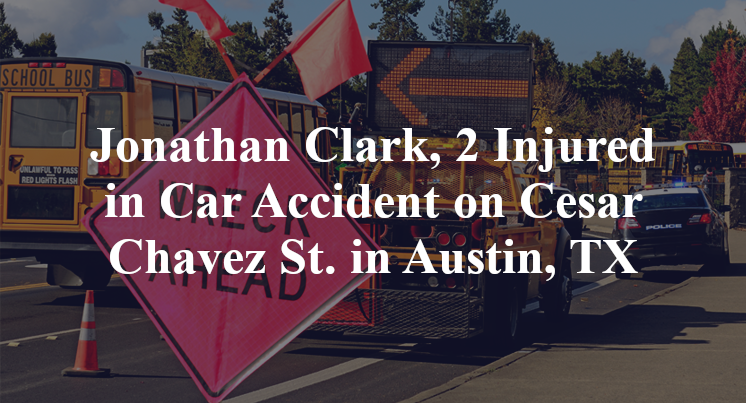Jonathan Clark, 2 Injured in Car Accident on Cesar Chavez St. in Austin, TX
Travis County, TX — August 18, 2025, Jonathan Clark and two others were injured due to a car accident just after 3:00 p.m. along Cesar Chavez Street.
According to authorities, 37-year-old Jonathan Clark was traveling in a southbound Dodge Ram 1500 pickup truck on Nueces Street at the Cesar Chavez Street intersection when the accident took place.

Officials indicate that, for as yet unknown reasons, the pickup truck entered the intersection at an apparently unsafe time, failing to yield the right-of-way at a stop sign. A collision consequently followed between the pickup truck, an eastbound Dodge Challenger occupied by a 20-year-old man, and an eastbound Chevrolet Tahoe occupied by a 57-year-old woman.
Clark reportedly sustained serious injuries over the course of the accident. The man from the Challenger and the woman from the Tahoe suffered minor injuries, as well, according to reports. Additional details pertaining to this incident are not available at this point in time. The investigation is currently ongoing.
Commentary
Collisions at busy intersections often come down to split seconds and unclear circumstances. When multiple vehicles are involved, the first explanations rarely tell the whole story. To really understand what happened, investigators need to move past the surface details and dig into the factors that aren’t immediately obvious.
1. Did the authorities thoroughly investigate the crash?
When a truck reportedly entered an intersection at the wrong time, it’s important to confirm whether that account matches the evidence. Did investigators analyze the vehicles’ paths, timing of the stop sign, and impact angles? Were there any signs that the driver tried to brake or avoid the collision? In complex, multi-vehicle crashes, careful reconstruction is the only way to know whether one driver truly failed to yield—or whether another factor played a role. Without that work, the story can remain incomplete.
2. Has anyone looked into the possibility that a vehicle defect caused the crash?
It’s also worth considering whether the Dodge Ram itself contributed to the incident. Did the brakes function properly when the driver attempted to stop? Could there have been a steering or acceleration issue that pushed the vehicle into the intersection? Even safety systems designed to prevent crashes can fail silently. Unless the truck is inspected for these possibilities, assumptions about human error may be masking a deeper mechanical failure.
3. Has all the electronic data relating to the crash been collected?
The vehicles involved may hold critical evidence in their onboard computers. The Ram could show whether the brakes were pressed, how fast it was moving, or if the driver attempted to swerve. The Challenger and Tahoe may also record speed and impact data, helping reconstruct the sequence of events. Beyond the vehicles themselves, nearby cameras or traffic sensors could provide independent confirmation of how the crash unfolded. If investigators don’t secure that data promptly, key details may never come to light.
In multi-vehicle crashes, the truth often gets buried under assumptions about fault. Real answers only emerge when the unseen evidence—mechanical, electronic, and behavioral—is brought into the open.
Key Takeaways:
- A proper reconstruction is essential in multi-vehicle intersection crashes.
- Mechanical failures in the truck could have played a role in entering the intersection.
- Electronic and camera data may hold the clearest timeline of the crash if collected in time.

*We appreciate your feedback and welcome anyone to comment on our blog entries, however all visitor blog comments must be approved by the site moderator prior to showing live on the site. By submitting a blog comment you acknowledge that your post may appear live on the site for any visitors to see, pending moderator approval. The operators of this site are not responsible for the accuracy or content of the comments made by site visitors. By submitting a comment, blog post, or email to this site you acknowledge that you may receive a response with regard to your questions or concerns. If you contact Grossman Law Offices using this online form, your message will not create an attorney-client relationship and will not necessarily be treated as privileged or confidential! You should not send sensitive or confidential information via the Internet. Since the Internet is not necessarily a secure environment, it is not possible to ensure that your message sent via the Internet might be kept secure and confidential. When you fill out a contact or comment form, send us an email directly, initiate a chat session or call us, you acknowledge we may use your contact information to communicate with you in the future for marketing purposes, but such marketing will always be done in an ethical way.